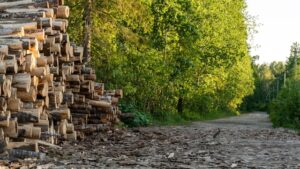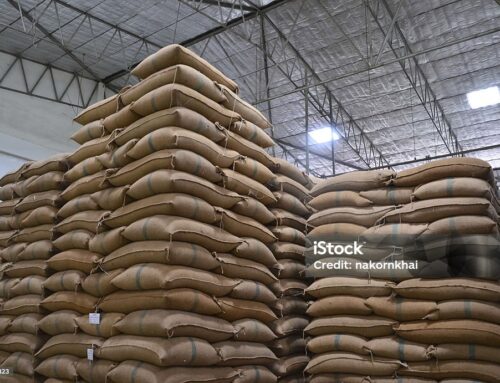
From the humble log to the soaring skyscraper, lumber stands as one of humanity’s oldest and most versatile commodities. A direct product of our planet’s forests, it fuels industries, builds homes, and underpins economies worldwide. Understanding lumber as a global commodity requires exploring its journey from forest to final product, its crucial role in economic development, the environmental considerations it entails, and the dynamic forces that shape its global market.
From Forest to Frame: The Production Process of Lumber
The journey of lumber begins in the forest and involves a series of interconnected steps:
-
Forest Management and Harvesting: Sustainable forest management practices are crucial for ensuring a continuous supply of quality lumber. This involves careful planning of harvesting operations, considering factors like tree maturity, biodiversity, and soil health. Harvesting methods vary depending on the terrain, tree species, and management objectives. Common methods include clear-cutting (removing all trees in an area), selective logging (removing only mature or specific trees), and shelterwood cutting (removing mature trees in stages to allow for natural regeneration).
-
Log Transportation: Once harvested, logs are transported from the forest to sawmills. This can involve trucks, trains, or even waterways, depending on the location and infrastructure. Efficient transportation is vital to minimise costs and environmental impact.
-
Sawmilling: At the sawmill, logs undergo a transformation into lumber. The process typically involves:
- Debarking: Removing the outer bark to prepare the log for sawing.
- Sawing: Using various types of saws (e.g., band saws, circular saws) to cut the log into desired dimensions of boards, planks, and beams. The sawing patterns aim to maximise the yield of usable lumber while considering the grain and quality of the wood.
- Edging and Trimming: Removing irregular edges and cutting the lumber to standard lengths and widths.
- Sorting and Grading: Lumber is sorted and graded based on species, size, and quality (e.g., number of knots, grain straightness, absence of defects). Grading standards vary by region and application.
-
Drying (Seasoning): Freshly sawn lumber has a high moisture content, which can lead to warping, cracking, and fungal growth. Drying, or seasoning, reduces the moisture content to a stable level. This can be done through air-drying (stacking lumber outdoors to dry naturally over time) or kiln-drying (using controlled heat and airflow in a kiln for faster and more precise drying). Kiln-dried lumber is generally preferred for applications requiring dimensional stability.
-
Planing and Finishing: Depending on the intended use, lumber may undergo further processing such as planing (smoothing the surface), sanding, and the application of finishes or preservatives.
Global Wood Baskets: Regions with Quality Lumber Forests
Forests capable of yielding high-quality lumber are found across various climatic zones and geographical regions:
- Boreal Forests (Taiga): Stretching across vast areas of Canada, Russia, and Scandinavia, these forests are dominated by coniferous trees like spruce, pine, and fir, which provide strong and relatively lightweight softwood lumber.
- Temperate Coniferous Forests: Found in regions like the Pacific Northwest of North America (Douglas fir, hemlock, cedar), parts of Europe (pine, spruce), and New Zealand (radiata pine), these forests yield high-quality softwoods prized for their strength and workability.
- Temperate Broadleaf and Mixed Forests: Located in eastern North America, Europe, and parts of Asia, these forests contain a mix of hardwoods (e.g., oak, maple, cherry) and softwoods. Hardwoods are valued for their strength, durability, and aesthetic appeal.
- Tropical Rainforests: While facing significant sustainability concerns, some tropical regions in South America, Africa, and Southeast Asia contain diverse hardwood species known for their exotic appearance and durability (e.g., teak, mahogany, ebony). Sustainable harvesting practices are crucial in these regions.
- Plantation Forests: Increasingly important globally, plantation forests, often featuring fast-growing species like pine, eucalyptus, and poplar, are managed specifically for timber production. They can contribute significantly to lumber supply while potentially reducing pressure on natural forests if managed sustainably.
The Top Players: Leading Lumber Importers and Exporters
The global trade in lumber reflects the distribution of forest resources and the demand from various industries.
Top 10 Lumber Exporters (approximate, based on value):
- Canada
- United States
- Sweden
- Russia (trade significantly impacted by geopolitical events)
- Germany
- Finland
- New Zealand
- Austria
- Brazil
- Poland
Top 10 Lumber Importers (approximate, based on value):
- United States
- China
- Canada
- United Kingdom
- Germany
- Japan
- Australia
- France
- Italy
- Netherlands
These rankings can fluctuate based on economic conditions, housing markets, and trade policies. However, they highlight the significant demand for lumber in developed economies and rapidly growing nations.
The Building Blocks: Industries Reliant on Lumber
Lumber’s versatility makes it an indispensable material for a wide array of industries:
- Construction: This is the largest consumer of lumber globally. It is used for framing (studs, joists, rafters), sheathing, flooring, roofing, decking, and various other structural and finishing applications in residential, commercial, and infrastructure projects.
- Furniture Manufacturing: Both hardwoods and softwoods are used to create furniture, ranging from solid wood pieces to structural components in upholstered items. The choice of lumber depends on the desired strength, appearance, and cost.
- Packaging: Lumber is used to produce pallets, crates, and boxes for shipping and storing goods across various industries. Its strength and affordability make it a preferred material for this purpose.
- Paper and Pulp Industry: While not directly used as lumber, wood fiber (often from smaller trees or processing residues) is the primary raw material for pulp and paper production.
- Remodeling and Renovation: A significant portion of lumber demand comes from the repair, remodeling, and renovation of existing buildings.
- Do-It-Yourself (DIY) and Craft Markets: Lumber is a fundamental material for hobbyists and craftspeople for a wide range of projects.
- Landscaping and Outdoor Structures: Lumber is used for fences, decks, pergolas, sheds, and other outdoor structures. Treated lumber is often used for ground contact applications to prevent decay.
- Transportation: Lumber is used in the construction of truck beds, railcars, and for dunnage (securing cargo during transport).
The Foundation of Progress: Why Lumber is Essential for Economic Development
Lumber plays a vital role in economic development through several key avenues:
- Housing and Infrastructure: Affordable and readily available lumber is crucial for the development of housing and infrastructure, which are fundamental for economic growth and social well-being. The construction sector is a significant employer and contributor to GDP.
- Job Creation: The forestry and wood products industry, encompassing logging, sawmilling, manufacturing, and transportation, provides significant employment opportunities in rural and urban areas.
- Resource Utilization: Sustainable harvesting and processing of timber utilize a renewable natural resource, contributing to economic activity and value creation from domestic resources.
- Trade and Export Revenue: For countries with abundant forests, lumber exports generate significant foreign exchange earnings, contributing to national income and trade balances.
- Support for Related Industries: The lumber industry supports a wide range of related sectors, including transportation, machinery manufacturing, and the production of building materials and finishes.
- Rural Development: Forestry and lumber production can be key economic drivers in rural communities, providing livelihoods and supporting local economies.
- Carbon Sequestration (Sustainable Forestry): Sustainably managed forests act as carbon sinks, absorbing carbon dioxide from the atmosphere. A healthy forest products industry can incentivize sustainable forest management, contributing to climate change mitigation.
The Environmental Ledger: Impacts of Lumber Production
While lumber is a renewable resource, its production can have significant environmental impacts if not managed sustainably:
- Deforestation and Habitat Loss: Unsustainable logging practices, particularly illegal logging and clear-cutting without proper regeneration, can lead to deforestation, habitat destruction, and biodiversity loss.
- Soil Erosion and Degradation: Improper harvesting techniques, especially on steep slopes, can result in soil erosion, sedimentation of waterways, and loss of soil fertility.
- Water Quality Impacts: Logging operations can increase sediment runoff into streams and rivers, affecting water quality and aquatic habitats. Chemicals used in wood treatment can also pose risks if not handled properly.
- Carbon Emissions: While forests sequester carbon, unsustainable logging and the decomposition of logging residues can release carbon dioxide into the atmosphere. Deforestation is a major contributor to climate change.
- Impacts on Wildlife: Logging can disrupt wildlife habitats, fragment populations, and impact species dependent on old-growth forests or specific forest structures.
- Use of Chemicals: Herbicides may be used in forest management, and preservatives and finishes applied to lumber can have environmental and health implications if not used responsibly.
- Transportation Emissions: The transportation of logs and lumber over long distances contributes to greenhouse gas emissions.
Building Blocks and Beyond: Common Lumber Types
The construction and manufacturing industries rely on a variety of lumber types, categorized primarily by species (softwood vs. hardwood) and processing:
- Softwoods (from coniferous trees):
- Spruce-Pine-Fir (SPF): A common and cost-effective softwood used extensively for framing in residential construction.
- Douglas Fir: Known for its strength and straight grain, used for structural framing, beams, and plywood.
- Southern Yellow Pine: Strong and relatively dense, used for framing, decking, and treated lumber.
- Hemlock-Fir: Often grouped together, used for general construction framing.
- Cedar: Naturally resistant to decay and insects, used for siding, decking, and outdoor applications.
- Hardwoods (from deciduous trees):
- Oak: Strong, durable, and aesthetically pleasing, used for flooring, furniture, cabinetry, and structural applications.
- Maple: Hard, dense, and with a fine grain, used for flooring, furniture, and kitchenware.
- Cherry: Prized for its rich color and workability, used for furniture, cabinetry, and veneer.
- Poplar: A softer hardwood, often used for paint-grade applications, furniture frames, and plywood cores.
- Mahogany: A reddish-brown hardwood valued for its beauty and durability, used for high-end furniture, veneers, and boatbuilding (often sourced sustainably).
- Engineered Wood Products: These are manufactured by bonding wood strands, fibers, or veneers together with adhesives to create stronger, more dimensionally stable, and often more sustainable building materials:
- Plywood: Thin layers of wood veneer glued together.
- Oriented Strand Board (OSB): Made from compressed wood strands.
- Laminated Veneer Lumber (LVL): Layers of wood veneer bonded under pressure.
- Laminated Strand Lumber (LSL): Similar to OSB but with longer, thinner strands.
- I-Joists: Engineered joists with top and bottom flanges of solid lumber or LVL and a web of OSB.
Stewarding the Resource: Sustainable Lumber Production
Different countries employ various strategies to manage sustainable lumber production and mitigate environmental impacts:
- Sustainable Forest Management Certifications: Organizations like the Forest Stewardship Council (FSC) and the Sustainable Forestry Initiative (SFI) provide certifications to forests and wood products companies that meet specific environmental and social standards. These certifications promote responsible forest management practices.
- Reforestation and Afforestation Programs: Many countries have regulations and programs in place to ensure the replanting of harvested areas and the establishment of new forests (afforestation) to maintain forest cover and carbon sequestration capacity.
- Selective Logging Practices: Promoting selective logging over clear-cutting in appropriate forest types can reduce habitat disturbance and maintain forest structure.
- Reduced Impact Logging (RIL): Techniques that minimize damage to the residual forest, soil, and water during harvesting are encouraged or mandated in some regions.
- Protection of Old-Growth and High Conservation Value Forests: Designating and protecting ecologically important forests from logging is crucial for biodiversity conservation.
- Regulations on Harvesting Practices: Governments often implement regulations on logging permits, harvesting quotas, and the size and age of trees that can be harvested.
- Promotion of Engineered Wood Products: Encouraging the use of engineered wood products can improve resource efficiency by utilizing smaller trees and wood residues.
- Combating Illegal Logging: International cooperation and national enforcement efforts are essential to combat illegal logging, which has severe environmental and economic consequences.
- Research and Development: Investing in research to improve forest management practices, wood processing technologies, and the utilization of wood residues can contribute to sustainability.
The Price Pendulum: Economic Implications of Fluctuating Lumber Prices
Fluctuating lumber prices have significant economic implications on global markets due to lumber’s widespread use:
- Construction Costs: Lumber is a major input cost in the construction industry. Price spikes can significantly increase the cost of building homes, infrastructure, and commercial buildings, potentially slowing down development and impacting affordability.
- Housing Market: Fluctuations in lumber prices can influence housing affordability and demand. Higher lumber prices can translate to higher home prices, potentially making homeownership less accessible.
- Manufacturing Costs: Industries that use lumber as a raw material, such as furniture and packaging, are directly affected by price volatility. Increased lumber costs can lead to higher prices for consumer goods.
- Inflation: As a key input in construction and other sectors, significant increases in lumber prices can contribute to broader inflationary pressures in the economy.
- Volatility in the Forestry Sector: Price swings can impact the profitability of logging companies and sawmills, leading to instability in the forestry sector and potentially affecting employment.
- Trade Flows and Balances: Significant price differences between exporting and importing regions can influence trade volumes and the trade balances of participating countries.
- Investment Decisions: Volatile lumber prices can create uncertainty for investors in the forestry and construction sectors, potentially affecting investment decisions.
- Economic Growth: Stable and affordable lumber supplies support economic growth by facilitating construction, manufacturing, and trade. Price volatility can create headwinds for economic expansion.
The reasons for lumber price fluctuations are multifaceted:
- Supply Disruptions: Events like wildfires, extreme weather, transportation bottlenecks, and trade restrictions can disrupt lumber supply and lead to price increases.
- Demand Shifts: Changes in housing demand, economic growth, and government infrastructure spending can significantly impact lumber demand and prices.
- Forest Health Issues: Pest outbreaks and diseases can affect timber supply and quality.
- Trade Policies: Tariffs and trade agreements can influence the flow and cost of lumber between countries.
- Speculation: Commodity markets can be subject to speculative trading, which can amplify price swings.
- Mill Capacity and Production: The capacity and operational status of sawmills can affect the supply of finished lumber.
In conclusion, lumber is an enduring and essential global commodity with deep roots in our economies and societies. Its journey from forest to final product involves complex ecological, economic, and social considerations. Sustainable management practices, responsible consumption, and an understanding of the factors influencing its global market are crucial to ensuring that this vital resource continues to contribute to human progress without compromising the health of our planet’s forests.



